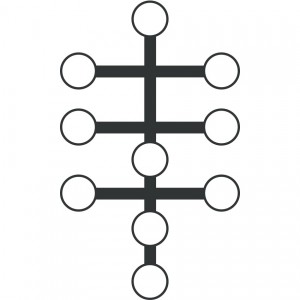In “the Raven”, a very insightful Grimms Brothers fairy tale, the opposites constellate for the the hero at 2 pm. The time is significant because it is early in the afternoon, representing early adulthood, just past the noon of life; the number 2 signifies the time at which a pair of opposites can first constellate. The hero must answer the challenge of the anima, a beautiful young woman, at the appointed hour of 2 pm, when the opposites constellate. On three separate days, she provides him with the opportunity to rise to the challenge by standing on the tan bark, assuming his conscious standpoint, so that he is in a position to relate to her consciously when she arrives in her carriage. But each time he fails to appear. Instead he falls prey to an old woman, the archetypal Mother, who seduces him with food and drink. He falls into a stupor, or unconsciousness, on each occasion. Because he has failed to meet the anima as agreed upon mutually, she loses her human form and flies away as the Raven. The rest of the tale depicts the various trials and tribulations the hero must undergo in order to strengthen his ego position, to prove his mettle, so that at the end of the fairy tale he is able to climb the glass mountain and redeem the Raven/princess and marry her. In Jungian terms, in the beginning of the story, the hero demonstrates that his ego complex is still in thrall to the Mother (or the mother complex) and that it is not strong enough to withstand the tension of the opposites. As a result he does not have the capacity to answer the challenge of the anima. He must develop this capacity before he can meet her challenge. And, in the process, while he is waiting patiently for one year at the base of the glass mountain, he finds in himself a trusting, spiritual attitude as well as the tools from the shadow that prove helpful in climbing the glass mountain. (By the way, it is possible to frame this fairy tale for female as well as male psychology.)
The featured image of this blog entry is a schematic depiction of the Kabbalistic Tree. Each of the circles represents a Sephirah, an emanation of the Godhead or its analogue in the human body. The bottom Sephirah is grounded. The other Sephiroth are arranged in pairs of opposites mediated by a third Sephirah. Let’s look at one of the triads, the middle one. The Sephirah on the right is called Hesed (or loving kindness), the one on the left is named Gevurah (severity or judgment) , and the one in the middle Tifereth (marriage). The Zohar, the Kabbalistic bible so to speak, understands the binding of Isaac by Abraham (the Akedah) as Abraham’s need to overcome his one-sided loving kindness and to become truly balanced and whole by integrating Hesed with its opposite Gevurah. The result is Tirereth. Abraham demonstrated his success in withstanding the tension of the opposites and progressing in his personality development. I mention this particular triad because it is not only important to the Jewish religion, which reads this passage of the Torah on Yom Kippur, the Day of Atonement, but because Jung had a significant dream involving this triad following his heart attack in 1944. This triad represents the heart of the matter, as it were.
Notice that the bottom Sephirah stands alone. It is grounded, not part of a pair. The opposites have not yet constellated. This Sephirah is known as Malkuth (kingdom). This is a position the would-be Kabbalist is in before he or she begins the process of climbing the Kabbalistic tree symbolically. A person, male or female, must be very well grounded before beginning this process. In classical Jungian terms, it means that the person must have accomplished the tasks of the first half of life, such as becoming educated, established in a career and engaged in a committed relationship with another. It is not so different in the realm of Kabbalah since the year 1666. Why that year? Well, that is the year that Nathan of Gaza announced that he had a dream in which Sabbatai Zevi (a ne-er-do-well itinerant rabbi) was revealed as the Messiah. Because Nathan at age 20 was a brilliant scholar of Torah, Talmud and Kabbalah, his enthusiastic pronouncement and sustained support of Sabbatai persuaded virtually the entire worldwide Jewish community to follow his lead. Disaster struck about a year later, when Sabbatai given the choice by the sultan of being put to death or taking the turban (converting to Islam), chose to take the turban. In the awful aftermath of this debacle, the conventional Jewish position about studying Kabbalah came to insist that first the person had to accomplish successfully the Jewish equivalent of the first half of life tasks. Being brilliant was clearly not enough! By the way, this catastrophe gave rise to a pair of opposites in the recovering Jewish religion: Hasidism and Reform Judaism.
The moral of these stories is that before a classical Jungian analysis (or classical psychoanalysis) is undertaken, it is important for the analysand to be well grounded so that he or she is in a position to withstand the tension of the opposites. The point is to accomplish healing, wholeness and differentiation, not their opposites.

